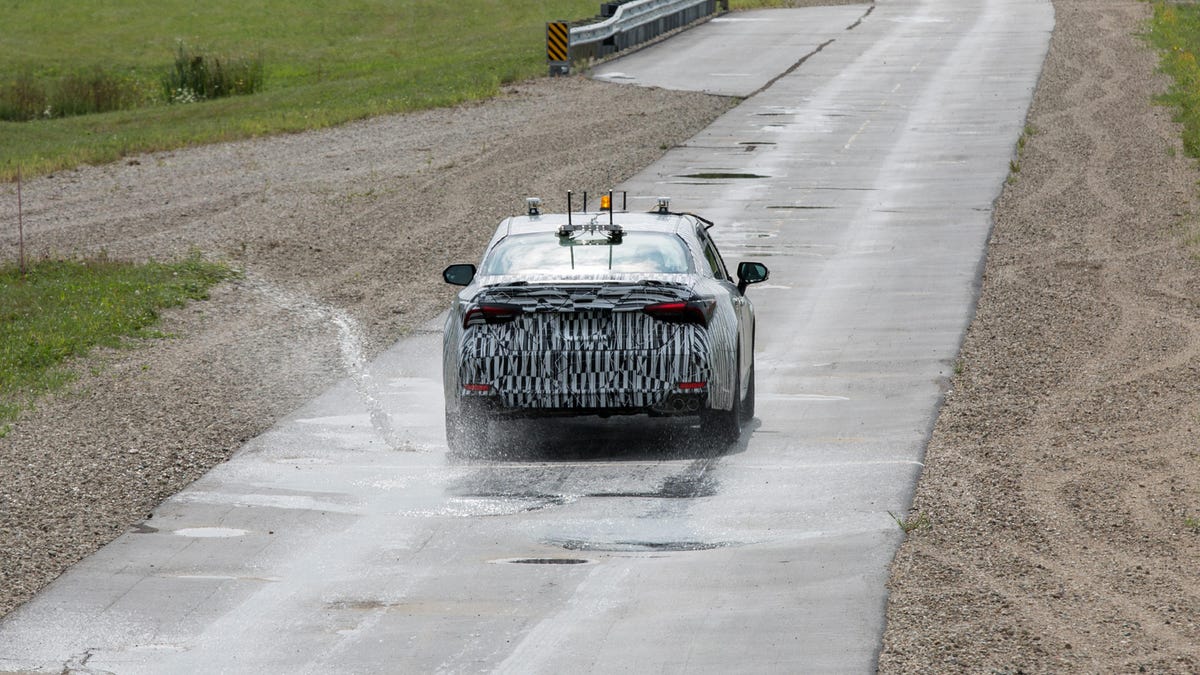Toyota put a robot in charge of pothole durability testing
A million chiropractors cried out as their billable hours just dropped.

Testing a vehicle's durability by driving over tons of potholes sounds like a job for the low man on the totem pole. But even the lowest-ranking engineer can breathe a sigh of relief at Toyota , since the automaker found a more efficient way to test vehicle durability.
Toyota has started using autonomy-adjacent tech to test pothole-related durability. Toyota has a closed course in Michigan that's built specifically to contain the worst of what a road has to offer -- potholes, odd undulations and other kinds of road defects. Humans used to be the ones getting smacked around hour after hour, day after day, until Toyota subbed in a robot.
One look at the steering wheel is enough to determine that this isn't your average 21st-century AV.
The automaker realized that having a human behind the wheel wasn't a necessity, so it developed an automated system to handle the task. It's not a system based on current driver-assist tech, but rather an old-school collection of actuators, levers and other mechanical equipment. You won't find anything from Toyota Research Institute on this car -- it's a purpose-built machine meant to handle this road and this road alone.
It does, however, use GPS-based positioning to control its path down the pockmarked roadway. "Traditional in-car global positioning systems are accurate to about four-meters," said Don Federico, Toyota's vehicle performance development manager, in a statement. "Our system and control accuracy needed to be far greater to keep the test car on the narrow track at high speeds and to get accurate test results, especially while getting bounced around by potholes."
Robots don't have these pesky things called worker's rights, which means productivity is way up. 30-minute driver swaps are a thing of the past, and the robot is able to chart a more accurate and repeatable path down the road without requiring any breaks. The only thing holding the vehicle back at this point is the gas tank.

